Since we rented our first house a little less than ten years ago, we’ve been learning every detail of how to grow tomatoes, so when I was asked to put this article together I knew it was going to be a team effort.
Every year, we split the tasks between ourselves, my partner does the watering, I do the pruning, and we both cook up vast amounts of tomatoes, usually growing at least 75 plants a year, indoors, in the greenhouse and in the garden.
The most rewarding vegetable (fruit) you can grow is a tomato without any shadow of a doubt. They’re a great crop for beginners, and the art of growing the perfect tomato is a sought-after skill by gardeners and horticulturalists all over the world.
More...
Natural Habits of Tomatoes (Solanum lycopersicum)
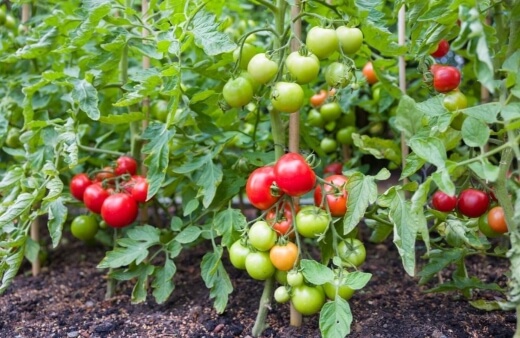
Tomatoes (Solanum lycopersicum) are the most recognisable member of the solanum family, which includes peppers, aubergines, deadly nightshade, and even potatoes.
In cultivation they have been trained into two main varieties, bush and cordon tomatoes, but they actually originate from central America, and are thought to have first been cultivated by the Aztecs.
Solanum pimpinellifolium is the wild tomato, with miniature fruits, growing on sprawling vines, still growing wild today in Peru and Ecuador, just south of the equator.
While they are edible, they are nearly impossible to grow successfully outside of their natural habitat as raised humidity, and cooler conditions mean they almost always develop blight, fungal issues and fail to fruit.
They are also incredibly similar looking to deadly nightshade and the two are easily confused.
Different Tomato Types
Tomato plants come in two main groups, cordon and bush tomatoes. The type of tomato you grow determines not only the types of fruit it will bear, but the amount of care your plants need.
Thankfully, both are incredibly easy to grow from seed, or propagate from cuttings.
Cordon Tomatoes - Indeterminate Tomatoes

Cordon tomatoes, otherwise called indeterminate tomatoes, can grow up to 3m tall and require the most care, tending to develop masses of side shoots that can use up vital energy needed for fruiting.
The easiest way to care for cordon tomatoes is to train them up twine, and prune side shoots. Side shoots are the small stems that grow sideways at 45 degrees between the stem and main truss (the horizontal branch that later bears fruit).
Because of their height they need regular water throughout the growing season to keep a steady flow up the stems. This helps their strength, and is essential to ripen fruit.

Bush Tomatoes - Determinate Tomatoes
Bush tomatoes, or determinate tomatoes, as their name suggests have pre-determined heights, spreads and growth habits. They require very little pruning and usually produce plum or cherry tomatoes rather than large salad or beefsteak varieties.


Get Your Free Guide:
Master Growing Australian Natives eBook
A Must Have Complete Guide for Every Australian Garden
Get Your Free Guide:
Master Growing Australian Natives eBook
A Must Have Complete Guide for Every Australian Garden
Tumbling Tomatoes - Trailing Tomatoes
Tumbling tomatoes are more similar to their ancestors, preferring to trail, and can be grown as ground cover plants in greenhouses, but are best advised in hanging baskets to avoid slug damage.
They produce the smallest fruits, and are nearly all cherry tomatoes, but are well worth growing as they don’t require a greenhouse, and will grow outdoors in every part of Australia.
Best Tomato Varieties to Grow in Australia
Once you’ve got your head around tumbling, bush and cordon tomatoes, you’ve got to decide how you want to cook them when they start fruiting.
There are four tomato types to choose from, with a few crossovers and hybrids, but these are our picks of the best tomatoes for growing outdoors in Australia.
Salad Tomatoes
Salad Tomatoes are the tomatoes you dream about in winter when you’re months away from harvesting. The tomatoes with all the flavour, and all the freshness of summer. They’re perfect in salads and while most are bright red, our favourites are a little bit more special:
1. Tigerella Tomato
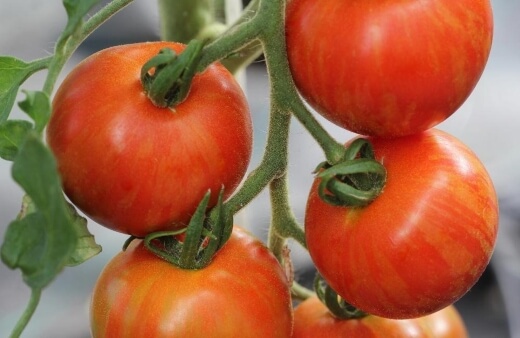
Tigerella is a really attractive tomato, turning from green to orange as it ripens, with distinct yellow, red and brown stripes all over its exterior. They don’t claim to have any disease resistance, but we’ve never had any issues with fungal issues in all our years of growing them.
2. Green Zebra Tomato
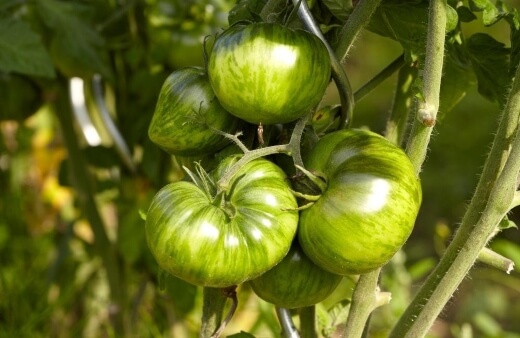
Green Zebra are one of the few tomatoes that stay green when they ripen. Because of this it can be hard to tell when they’re fully ripe, but by giving them a gentle squeeze you’ll be able to tell easily.
They have a unique almost citrusy flavour too, so make incredible salsa.
Plum Tomatoes
Plum tomatoes, or paste tomatoes are often referred to as Roma tomatoes, but Roma is an Italian strain of plum tomatoes great for hot weather, producing masses of red fruit that is perfect for sauces, and, you guessed it, pizza bases.
3. Roma Tomato
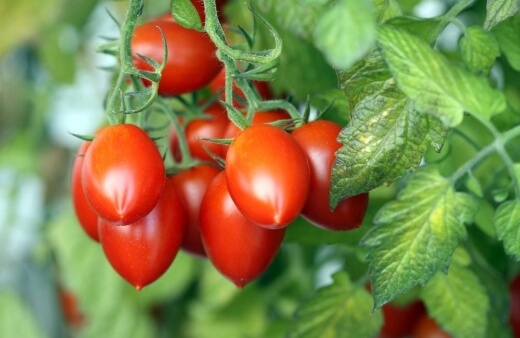
Roma grow really well outdoors in Australia, but can benefit from the regularity of greenhouse growing. They prefer dry conditions, so any rise in humidity should be carefully controlled.
If you live in a wet part of the country, keep them in a greenhouse with the windows open all through summer. For dried conditions, they’ll do fine outside.
4. Banana Legs Tomato
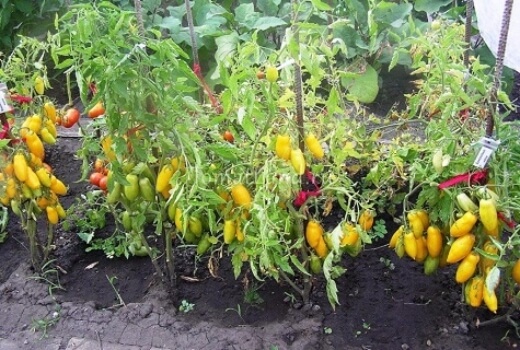
Source: Garden-en.desigusxpro.com
When we were writing this article we had so many arguments about which tomatoes to include in this list, but one we both completely agreed on was banana legs.
We started growing banana leg tomatoes about eight years ago because we thought the name was funny, but there is no better tomato for making pastes, ketchups and soups.
They make perfect pastes, and their entire flesh is bright yellow, keeping that colour after cooking.
Beefsteak Tomatoes
Beefsteak tomatoes can grow to monster sizes, some reaching well over 10oz per fruit, and a properly pruned cordon beefsteak can easily produce 10-15 fruits per plant.
They are firm fleshed tomatoes, so unlike salad tomatoes don’t have the typical ‘burst’ of flavour, and unlike plum, don’t make great pastes, but they are brilliant for slicing and griddling and hold their shape when cooked.
5. Pink Ponderosa Tomato
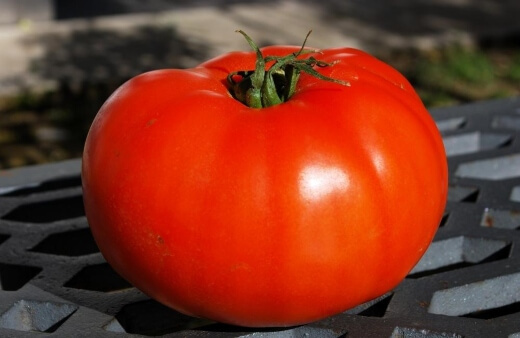
These flat pin-cushion tomatoes develop blushing pink fruits that grow to a huge 10cm wide. Sliced down into discs they can be cooked on the grill and are so good you honestly don’t even need a burger in your bun.
6. Mountain Merit Tomato (F1)
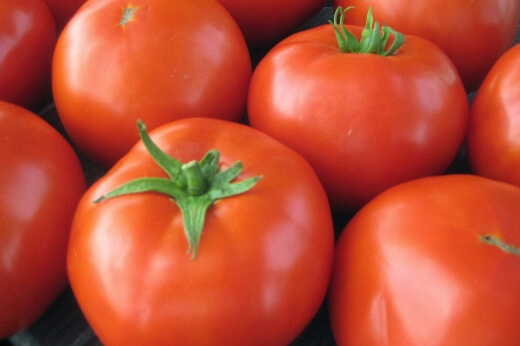
Source: Bejoseeds.com
Mountain Merit is the epitome of beefsteak tomatoes, with excellent resistance to blight and blossom end rot. Beef steaks are usually best sliced, but Mountain Merit is a really versatile cooking tomato, with pops of juice through its centre, so can be used for soups, salads, sauces, or slicing.
Cherry Tomatoes
Cherry tomatoes are the smallest, and most honest to their ancestors, but they can be grown as cordons, bushes or tumbling varieties, and have more variety than any other tomato plants.
They’re perfect for salads, but because they taste so damn good, they never actually make it as far as the kitchen before you’ve scoffed a lot.
7. Romello Tomato
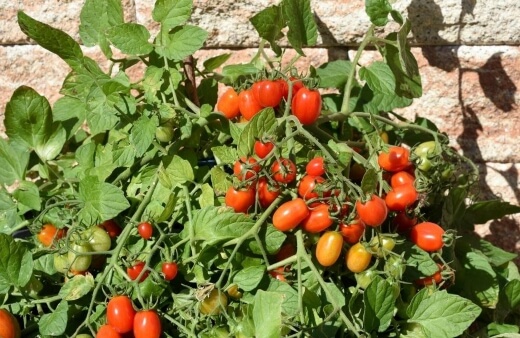
Romello has a unique poop of umami goodness that bursts in the mouth and just brightens up your day. They got their name from clever interbreeding between plum tomatoes and cherry tomatoes -especially Roma varieties, which gives them a wonderful plum shape, with the sturdy flesh that brings, but with the pop of a fresh salad tomato.
8. Black Tomato
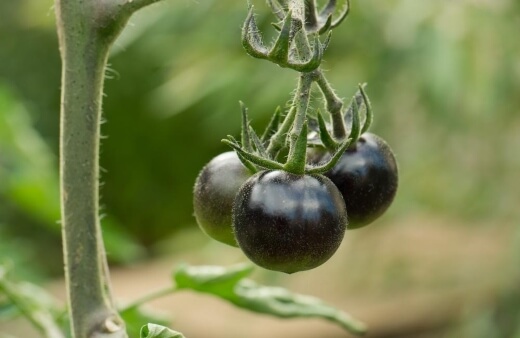
Black Cherry tomatoes are beautiful little fruits, with a graded skin turning darker as it ripens, and with one of the richest flavours of any tomato.
They need full sun to ripen, and high temperatures to reach their best flavour, so grow them on a north-facing patio, or even in the greenhouse for best results.
How to Grow Tomatoes
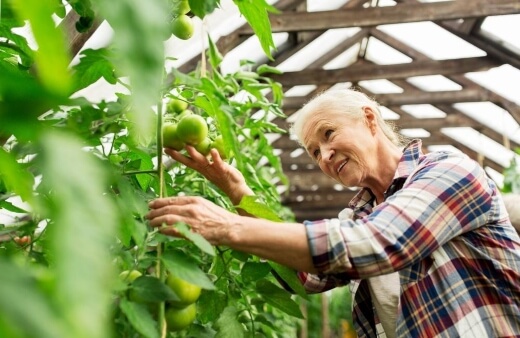
How to Grow Tomatoes from Seed
You can buy ready grown tomato plants from garden centres, and even order them online, but the cheapest option is to propagate your own from seed.
One packet will usually grow 50 tomato plants, and while that’s often too much for your kitchen window, greenhouse or even more than needed in your garden, it’s much more cost effective than buying plants.
To propagate tomatoes from seed you’ll need a seed tray, some 9cm pots, some seed compost, and a regular kitchen tray. Start by filling a seed tray with seed compost, leaving 1cm before the top of the tray.
Sow seeds thinly on the surface of the compost (roughly 1” between seeds, but you don’t need to be too precise) and tamp down so they have good contact with the soil.
Place the seed tray in a shallow tray of water, and leave for 5-10mins until saturated. Then place on a sunny windowsill or heated propagator and leave until they germinate.
When they reach 2-3” tall and have true leaves, gently prick them out with a pencil holding them by the leaves, not the stem, and pot into 9cm pots of seed compost, watering when the soil surface is dry until they reach 2ft tall.
How to Grow Tomatoes from Cuttings
An easy way to boost your tomato stock is to take cuttings. Young plants often send outside shoots between the main stem and trusses. If these side shoots grow too long simply cut them off and place them in water.
When they root, pot them into 9cm pots and plant out the same way as tomatoes grown from seed.
Planting Tomatoes Guide
When to Plant Out Tomatoes
When roots appear from the holes at the base of their 9cm pots, tomatoes are ready to plant out. As long as any chance of frost has passed, and temperatures are reliably above 10C, they can be planted in the greenhouse or garden, either in pots, or straight in the ground.
Where to Plant Tomatoes
Tomatoes need full sun, and good ventilation. For most of Australia, tomatoes can be planted out in a sunny spot in the garden without any extra pots, bags, heat or covering, but some heirloom tomatoes need a little extra help from the greenhouse – or growing indoors.
The main consideration is movement. Do you want to be able to move tomatoes around the garden? If so, then plant them in pots rather than trays or the ground.
Soil Requirements for Tomatoes
Tomatoes need nutrient rich soil, so for ground planted tomatoes, make sure to mulch the ground in spring before planting tomatoes out to give your soil a boost, or dig compost and rotted manure into the soil.
When planting tomatoes in pots though, a straightforward peat free compost mixed with vermiculite or perlite will provide all the nutrients and drainage your tomato needs.
Young tomatoes don’t need much food, as it promotes side shoots and takes away from the energy main trusses need to develop flowers and fruit.
How to Care for Tomatoes

Watering Tomatoes
Tomatoes are hungry plants that need regular watering. Their thirst is truly intense, so to keep your water bills down it is definitely a good idea to harvest rainwater with water butts, or even grey water redirected from the bath.
Rain water is best as it doesn’t contain chlorine or fluoride, which can be damaging to plants.
Tip: Watering from the base rather than the soil surface reduces the risk of splashing leaves (tomato leaves should be kept dry at all times where possible), and promotes downward root growth.
How to Prune Tomatoes
For bush tomatoes, the only reason to prune them is to remove any dead, damaged or diseased growth, or to increase air flow if you are worried about fungal infection.
For cordon tomatoes, regular pruning is an absolute must. There is no point growing fruit you can’t reach, so topping your plants at head height is a good idea.
This also helps redirect energy to flowers and fruit lower down the plant. Make sure to check for side shoots once a week, and cut off any growth that isn’t part of the main stem or trusses.
Training Tomatoes
Cordon, or indeterminate, tomatoes need some serious training to stop them flopping all over the ground. When cordon tomatoes touch the ground, they send out new roots and put their energy into new plant production (FYI, this is a good way to make new plants for next year when your harvest is finished).
To train cordon tomatoes, either attach twine to beams in your greenhouse, or build a simple bamboo teepee. Once twines are tied above each tomato, spiral them around the stem and ties them at the base of each plant.
Every few weeks, wrap the remaining overhead twine around the new growth. This stops them rocking and helps them cope with the weight of their fruits as they develop.
Bush tomatoes need very little training, but if they get top heavy, tie them to a single cane to stop them rocking.
How to Feed Tomatoes
Tomatoes need regular feeding once they begin to flower. Feeding before they flower isn’t necessary and will just waste potentially expensive fertilisers.
When they begin to produce flowers, a concentrated tomato fertiliser with balanced Nitrogen, Potassium and Phosphorus levels will do the trick.
(See our best fertiliser product reviews and buying guide for more information.)
Most fertilisers list their nutrients by N (Nitrogen), P (Phosphorus), and K (Potassium) so choose one that has a ratio of around 10-30-15. Tomato feeds, or liquid seaweed work really well in most settings.
Best Companion Plants for Tomatoes
There are only two reasons for growing companion plants with tomatoes – slug deterrents, and flavour enhancing.
Basil, as well as pairing with tomatoes in cooking, can improve the flavour of tomato fruits when grown alongside it in neighbouring pots or nearby in the ground.
Marigolds are the most cost-effective slug deterrents. Rather than sending them away, they distract them as slugs prefer the marigolds to the tomatoes.
When are Tomatoes Ready for Harvest
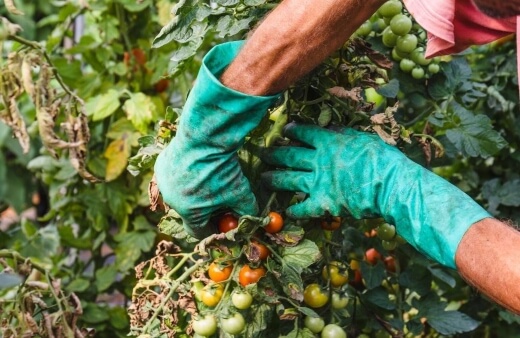
Aside from green tomatoes, like Green Zebra, all tomatoes are harvestable when they reach their final colours. Every tomato is slightly different, so knowing each plant is important, and keeping the seed packet to hand to check is always useful.
The real test is touch though. When tomatoes ripen they soften, so squeeze them, and if they feel firm but slightly give way, they’re ready for harvest.
How to Store Tomatoes
Tomatoes don’t store raw like onions, potatoes or squashes due to their high water-content so need to be eaten pretty quickly, but there are a few easy ways to prepare them for your winter larder.
If you ever have a glut (more than likely with bush tomatoes that tend to ripen all at once), cooking a big batch of tomato sauce to keep in the freezer is a useful way to keep homegrown produce safe until you need it, but my favourite is a little bit fiddler.
If you have an empty freezer compartment, place tomatoes on a baking tray straight in the freezer. Once they freeze they’ll be perfectly shaped billiard balls, ready to defrost and use whole in cooking.
They will lose some structure when defrosted, but their flavour will be exactly as it was when you harvested them.
Common Tomato Diseases
Tomatoes have three main enemies, humidity, slugs and calcium deficiency. Slugs are easy to control on tomatoes as they will only ever feed on tomatoes when there is nothing else.
They much prefer the foliage of marigolds so it’s a good idea to grow them alongside tomatoes as a sacrificial plant. Fungal infections like blight, stem rot or mildew are caused by over watering, or poor ventilation.
While it’s impossible to completely prevent blight, thanks to its transmission in wind, water and on the backs of insects, you can reduce the risk, and impact by regular pruning to improve aeration and remove infected materials, and for all fungal infections, a mix of baking soda, castile soap and water will help to dry out affected areas.
Blossom end rot, the crusty brown base that forms on ripening tomatoes is caused by a lack of calcium in the soil. There is no cure, but these parts can be cut off the tomatoes and they are still perfectly edible.
To prevent blossom end rot, mix egg shells into your compost mix to improve calcium, and mulch with coffee ground which will improve acidity in the soil and increase uptake of calcium. (See this article for more on tomato rot.)
Useful Tools for Tomato Growing
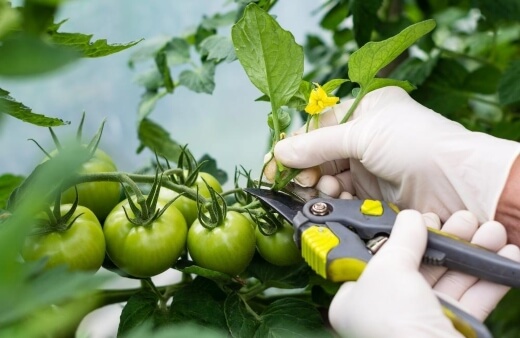
Secateurs and Pruning Scissors
A good pair of pruning scissors or secateurs is essential for tomato growing, but we prefer scissors due to their accuracy and ability to quickly snip off side shoots without bruising the rest of the plant.
Make sure to buy a decent quality pair of secateurs or pruning scissors for tomatoes though, as sharp cuts are clean cuts, and rough cuts lead to infection.
Here’s our guide to the best gardening secateurs available today.
Tomato Trays
Tomato trays are essential if you’re growing in pots or grow bags. Water can run straight through tomato pots so a decent tray for the base helps catch any wasted water and allows the plant to suck it back up later so you’re not wasting a drop.
Heated Propagators
To grow any solanum from seed (peppers, tomatoes, aubergines in particular) you’ll need either an incredibly warm windowsill, or a heated propagator.
They require temperatures of at least 12C to germinate, and heated propagators help with regular humidity too, which stops the dreaded damping off of seedlings.
Frequently Asked Questions About Growing Tomatoes
How can I treat tomato blight?
Tomato blight is best treated by removing affected parts of the plant and burning them. They should never be added to compost. To help restrain the infection a solution of baking soda, castile soap and water is usually effective against blight and mildew.
How often should I water tomatoes?
Tomato seedlings should only be watered when the soil surface is dry to touch. As tomato plants mature, they should be watered at least once a week, raising that to 2-3 times per week once flowers start to appear. Watering should be done at regular intervals with regular amounts.
Are tomatoes a fruit?
Knowledge is knowing that a tomato is a fruit. Wisdom is knowing not to put it in a fruit salad. Science is knowing that it’s technically a berry.
What is the difference between indeterminate and determinate tomatoes?
Determinate tomatoes are bush varieties, usually growing to 1-1.5m tall requiring very little pruning. Indeterminate varieties are also called cordon tomatoes as they require training along stems and can grow up to 3m tall without pruning.
Are tomato plants poisonous?
Attempting to answer the question, “Are Tomato Plants Poisonous?” must be considered in terms of whom, or what, they are poisonous to. For the average human being, tomato plants and their leaves are not poisonous.
The leaves and stems contain solanine, a glycoalkaloid poison that naturally occurs in tomato plants, potatoes and eggplant. This toxin is dangerous to all animals, including your pet cat or dog, but before you try ramming your fingers down your pet's throat it’s worth noting that it takes a considerable amount of plant matter to affect cats and dogs.
Many gardeners, with pets, have veered away from growing tomato plants just in case any part of it is consumed. This is a tad overkill and the risk that tomato plants may poison your pets is relatively minute.
While a relief if you’ve just noticed your pet with a half-digested tomato leaf hanging from its jaws, pet owners should be vigilant in keeping their mutts and felines away from the tomato patch altogether. Even small children should be warned of the possible dangers that tomato plants can be poisonous to them (in large doses).
The fruit of these plants: tomatoes, potatoes and eggplants do not carry the toxins to the same level, if at all so they are safe for your small children and pets.
Looking for more vegetables to grow in your garden? Read our comprehensive guide to growing potatoes in Australia.
For a deeper dive into tomato varieties, watch our YouTube video:
9 Types of Tomatoes You Don't Want to Miss
Now You Know How to Grow Tomatoes
Growing tomatoes truly is one of the most rewarding things you can do in the garden. There is no other fruit that tastes so distinctly different when grown at home to the varieties you can buy in shops.
We’re self-confessed tomato addicts, and I doubt we’ll ever slow down our annual tomato crop. Whether you grow two plants of two-hundred, I hope our guide to how to grow tomatoes help you make the most of the harvest this year, and every year to come.
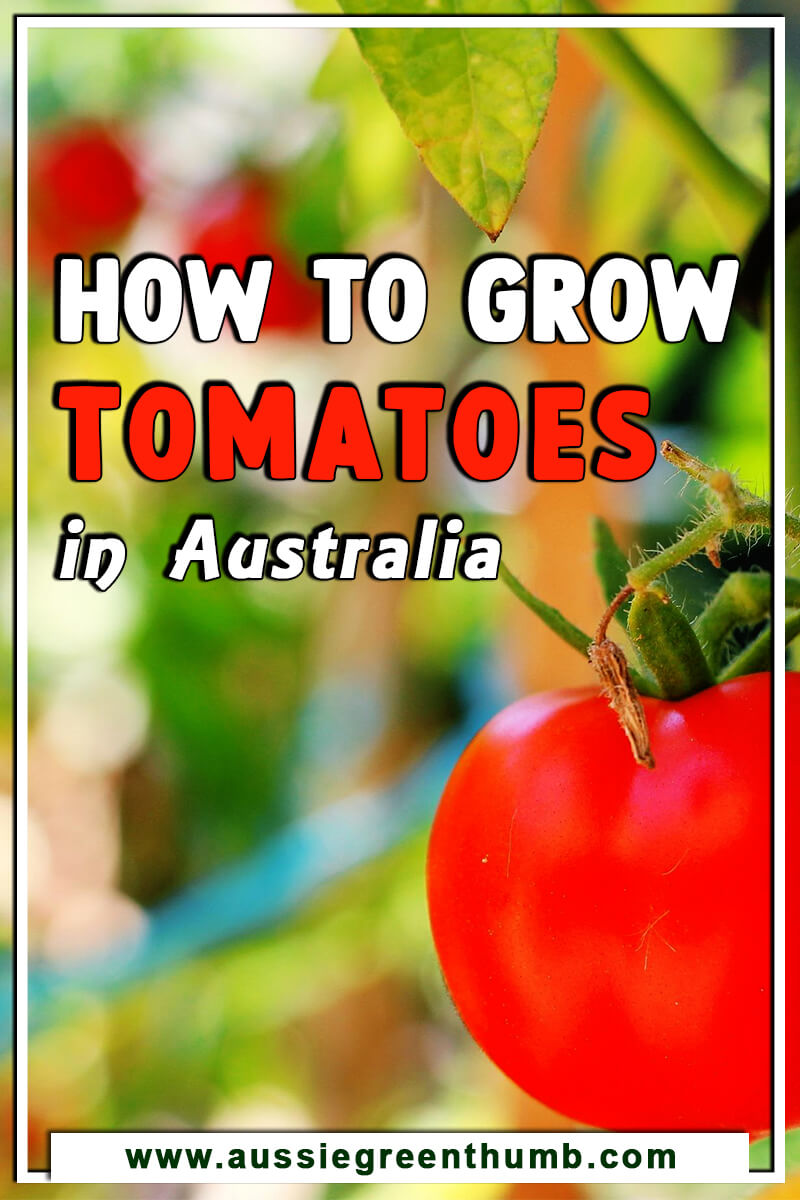
Published on January 5, 2022 by Lorri Hopkins
Last Updated on September 26, 2025




